“Beware of false prophets, which come to you in sheep's clothing, but inwardly they are ravening WOLVES.”
— The Gospel of Matthew 7:15 KJV
Previous Entries
The rise of dispensationalism, its propagation and popularization, is inherently tied to Cyrus I. Scofield and his Reference “Bible”. For how popular his book was and remains to this day, scarcely little information was available on the early life of this giant of the faith until the last several decades. It is only through the tireless work of researchers such as Joseph Canfield and David Lutzweiler that a great deal of this documentation has come to light. This is hardly an accident, but rather a calculated ploy by Scofield apologists to shield a very troubled man’s troubled past. We will find too that the forces at work behind Christian Zionism, the funders and financiers behind Scofield, are the same occult forces that have continually plagued Christendom since 1717.
The Scofield family traces their lineage back to the founding Puritan settlers of Connecticut, first settling there in the mid-1600’s. The grandfather of Cyrus Scofield, Elisha Scofield, served as the personal attendant of George Washington for the first year of the Revolutionary War. At just 16 years old, this very revealing bit of trivia establishes several facts for us: firstly, the Scofield’s were well connected enough to have the male heir to the family serving the most influential Freemason in American history. Secondly, they were likely well to do based upon the above consideration; also evident by young Elisha’s ability to both read and write in order to transcribe General Washington’s dictations.
Cyrus Scofield’s parents, Elias and Abigail Scofield, sought financial opportunities in the early 1800’s along the banks of the Raisin River in Lenawee County, Michigan. The youngest of five children, Cyrus Ingerson Scofield, was born on August 19th, 1843. The idyllic tranquility of this homestead was shattered by the untimely demise of Abigail, leaving Elias to navigate the complexities of single parenthood on the frontier.
— Cyrus Ingerson Scofield.
As the winds of war soon swept across the nation, Cyrus thrust himself into the tumult of the so called Civil War. Masquerading as a 21 year-old, Scofield was inducted into the Seventh Regiment of the Tennessee Infantry. His wartime exploits, still shrouded in mystery, eventually culminated in a plea for exemption from service after Antietam. This plea was eventually granted in September of 1862.
Scofield claimed throughout his life that he served in the Army of Northern Virginia for the entirety of the war. In a pattern that will become all too familiar, the historical record flatly contradicts Scofield’s claims. The Army of Northern Virginia kept meticulous documentation until the last year of the war. Cyrus Scofield does not appear listed in any army documents after September of 1862 (Canfield, Pg. 28), plainly showing the falsity of a claim he perpetuated throughout his preaching career.
Post-war reconstruction ushered in a period of opportunity for Cyrus, his wanderings eventually taking him to the vibrant streets of St. Louis, Missouri. Under the wing of Sylvester Papin — a titan of the legal profession — Cyrus embarked on a journey into the realm of law, eschewing the confines of academia for the practical tutelage of the courtroom. Not being particularly gifted in academic prowess, nor in academic rigour, it is unclear what made Scofield stand out to Papin (or so many other of his myriad benefactors, for that matter).
Amidst the cosmopolitan allure of St. Louis, Cyrus's path intersected with Leontine Cerre. Her marriage with Cyrus shortly afterwards heralded a new chapter in Scofield’s life, with two daughters quickly following their nuptials. The Scofields’ migration to Atchison, Kansas, in subsequent years would then thrust Cyrus into the maelstrom of local politics.
— The Secret Six, Northern abolitionists and the financiers of the Masonic terrorist John Brown.
As we delve into the annals of Cyrus Scofield's tumultuous life, one glaring aspect emerges — a dichotomy of guidance, one sinister and the other all too human.
The corridors of political power, ever tainted by the plague of corruption, proved both seductive and perilous for Cyrus Scofield. His association with Kansas politicos (including the infamous John J. Ingalls) quickly propelled him to the halls of the state legislature. At the age of 29, he would become the youngest U.S. District Attorney in the nation. However, allegations of impropriety dogged Scofield’s every step, casting a shadow over his political aspirations. Hounded by investigations, Scofield was forced into a hasty retreat from the public eye.
Behind the scenes, the machinations of the "Secret Six" funded Ingalls and his protege Scofield, greasing the wheels of political influence with ill-gotten gains. John Brown, the Masonic madman who helped spark the not so Civil War, had been funded by the Secret Six for the better part of the 1850’s. This makes Secret Sixer Samuel Howe’s meetings with John Wilkes Booth mere months before his alleged assassination of Lincoln highly conspicuous. Biographer Otto Scott said of this era that “he was doubtful whether anyone who had been in politics in Kansas in that period could ever have become a genuine Bible teacher.” (Canfield, Pg. 38)
The human guidance and largesse is also manifest in the opulent facade Cyrus erected, concealing a household that spoke of an unseen affluence. Henry Cerre, Leontine's 19 year old brother, shared their roof alongside an Irish maid named Catharine McGuire, aged 36; and Mary Brice, a ten year old black girl listed as a servant. The 1870 U.S. census paints a vivid picture: within the walls of Cyrus and Leontine's abode resided not only their nuclear family, but also a retinue of servants.
In the Reconstruction Era, the tightening grip of Northern banks constricted the American economy, subjecting its denizens to the throes of financial hardships. Yet, amidst this turmoil, Cyrus maintained the trappings of wealth— a brother-in-law, two female servants, and a homemaker wife — all while pursuing legal studies and not working a job. The lingering query, therefore, persists: whence did Cyrus derive his wealth? How did he so continuously find favor in his endeavours and legal troubles?
In the twilight years of the 19th century, Cyrus Scofield's life descended into a maelstrom of legal entanglements and familial discord. Accusations of forgery tarnished his once-sterling reputation. After his scandalous departure from office, Scofield abandoned Leontine and his daughters, living the life of a bachelor until his “miraculous” conversion in 1879.
“8 But if any provide not for his own, and specially for those of his own house, he hath denied the faith, and is worse than an INFIDEL.”
— 1st Epistle to Timothy 5:8 KJV
The details of his purported conversion remain cloaked in ambiguity and speculation. Occurring in his thirty-sixth year, his conversion remains a contentious point in the annals of religious history. Scofield biographer David Lutzweiler details the many different versions of Scofield’s conversion (emphasis mine):
I am not sure that you are aware of the existence of the letter to Scofield that my brother, James, found in the archives of the Central American Mission. It was from a CAM missionary who reminisced about hearing Scofield’s testimony of conversion in a rescue mission in St. Louis. That is totally different from (1) the version that he gave Trumbull, about being led by a 28-year-old Christian lawyer, Tom McPheeters, to accept Christ as his Savior; and (2) the version reported in the Topeka Daily Capital, that while he was in jail on forgery charges, a female Christian visitor led him to make a profession of faith. …and perhaps others, which Scofield himself acknowledged to Trumbull as being “many”…
— David Lutzweiler, Bias-based Blunders About C.I. Scofield
Any genuine convert would not have to fabricate their conversion story, period. Allegedly transpiring sometime between August 19th, 1879, and November 25th, 1879, this purported transformation lacks substantiation in any public records.
Moreover, as late as November 6th, 1879, Scofield found himself entangled in a forgery charge. This naturally lies in stark contradiction to the narrative of a reformed man endeavoring to rectify past transgressions. Despite claims of newfound faith, the legal proceedings surrounding the forgery cases depict a man seemingly unchanged by his spiritual enlightenment, casting a shadow of doubt over the sincerity of his conversion:
Cyrus I. Schofield, formerly of Kansas, late lawyer, politician and shyster generally, has come to the surface again, and promises once more to gather around himself that halo of notoriety that has made him so prominent in the past. The last personal knowledge that Kansans have had of this peer among scalawags, was when about four years ago, after a series of forgeries and confidence games he left the state and a destitute family and took refuge in Canada. For a time he kept undercover, nothing being heard of him until within the past two years when he turned up in St. Louis, where he had a wealthy widowed sister living who has generally come to the front and squared up Cyrus’ little follies and foibles by paying good round sums of money. Within the past year, however, Cyrus committed a series of St. Louis forgeries that could not be settled so easily, and the erratic young gentleman was compelled to linger in the St. Louis jail for a period of six months.
— Topeka Daily Capital
While Christ extends forgiveness to all, the absence of tangible evidence detailing a significant behavioral shift raises serious concerns regarding the authenticity of Scofield's spiritual metamorphosis.
— Cyrus Ingerson Scofield.
Scofield's foray into Christian service raises further questions about the authenticity of his theological convictions. With scant theological acumen and minimal scholarly pursuit, Scofield's rapid ascent to prominence within Christian circles raises eyebrows. Naturally, this should prompt intense scrutiny of his doctrinal contributions and theological innovations as he did not have the time or experience to gain them himself.
Despite only converting a year earlier, and while failing to support his family, Scofield was given a license to preach with Reverend James Brooke’s assistance. This flatly contradicts the divinely inspired instructions given by Paul about pastoral qualifications (emphasis mine):
1 This is a true saying, if a man desire the office of a bishop, he desireth a good work.
2 A bishop then must be blameless, the husband of one wife, vigilant, sober, of good behaviour, given to hospitality, apt to teach;
3 Not given to wine, no striker, not greedy of filthy lucre; but patient, not a brawler, not covetous;
4 One that ruleth well his own house, having his children in subjection with all gravity;
5 (For if a man know not how to rule his own house, how shall he take care of the church of God?)
6 Not a novice, lest being lifted up with pride he fall into the condemnation of the devil.
7 Moreover he must have a good report of them which are without; lest he fall into reproach and the snare of the devil.
— 1st Epistle to Timothy 3:1-7
No matter one’s belief in the worthiness of Scofield’s eschatology, this fact is not debatable: Scofield is and was flatly disqualified by GOD to be a pastor.
Furthermore, Scofield's personal conduct stands in stark contrast to the moral rectitude expected from a pastor. Included in this are the falsehoods that Scofield continually peddled about his second marriage, taking place a mere three months after his second round of divorce proceedings. Scofield instead claimed his marriage was 6 months after his divorce, once again contradicting what the official marriage records state. I can only assume he thought the extra time made the rapidity with which it transpired more palatable. These divorce proceedings and his rapid remarriage, coupled with accusations of abandonment and financial irresponsibility, call into serious question his suitability for pastoral ministry.
The discrepancy between Scofield's public persona and private conduct belies the purported spiritual transformation he espouses. Starting in 1892, Scofield started titling himself Dr. Scofield. Despite claiming to hold a Doctorate in Divinity, no college has any records awarding Scofield any such degree. As we continually recount tales of deception and duplicity, serious doubt continues to be cast upon Scofield's character and integrity. Imagine the chutzpah of a man that would lie about his credentials on the cover page of God’s Holy Word!
The narrative of a redeemed sinner turned preacher rings hollow in the face of mounting evidence to the contrary.
“I do not see how any Christian, most of all a Christian minister, can go to these secret lodges with unbelievers. They say they can have more influence for good, but I say they can have more influence for good by staying out of them and then reproving their evil deeds.
You can never reform anything by unequally yoking yourself with UNGODLY men.”
— D.L. Moody
Within the halls of Scofield’s First Congregational Church in Dallas lurked a cabal of the affluent and the influential, their names forever etched in the annals of wealth and power. The Cravens, the Dealeys, the Hawkes, the Moshers, and the Joneses; their mere presence within a singular congregation speaks volumes of their sway. Yet, beneath the veneer of religious devotion lay a sinister truth — a truth steeped in the esoteric rites of Freemasonry.
George Bannerman Dealey, scion of the Dealey dynasty and erstwhile steward of the Dallas Morning Newspaper, exemplified this duality. Yes, that would be the same George Dealey of Dealey Plaza fame: the infamous Masonic killing ground and the location of the very first Masonic Lodge in Dallas. Dealey's clandestine ties to the occult — including his mastery of the Scottish Rite and his active participation in the arcane Red Cross of Constantine — hints at a deeper, more nefarious agenda. It is not only conceivable but highly probable that Dealey, with his lofty Masonic accolades, played a pivotal role in ensnaring Cyrus Scofield within the labyrinthine folds of Masonic intrigue.
It is undoubtedly through Dealey’s connections with the Lotos Club that Scofield first gained his induction into that exclusive enclave. In 1901, Scofield found himself admitted to the prestigious club in New York City with the approval of the literary committee’s president, Samuel Untermeyer. Its membership list is a veritable who’s who of the Novus Ordo, including but not limited to:
Brooke Astor
Bernard Baruch
Andrew Carnegie
Walter P. Chrysler
Samuel Clemens (Mark Twain)
Mario Cuomo
David Dinkins
Dwight D. Eisenhower
Solomon R. Guggenheim
William Randolph Hearst
Joseph Koch
Whitelaw Reid
Jacob Schiff
Charles M. Schwab
Abram Strauss
Stephen Sondheim
Arthur Hays Sulzberger
Samuel Untermeyer
Orson Welles
Scofield's entry into this exclusivist fraternity, orchestrated under the aegis of Untermeyer and Dealey, raises serious alarms.
The club's mandate ostensibly championed intellectual discourse amongst journalists, artists, and devotees of literature. How on Earth then did Cyrus Scofield, an obscure fundamentalist preacher, get granted access to this quasi-Masonic fraternity? This alone invites extreme skepticism of the man (not to mention how he continued to afford the steep fraternity dues on his relatively austere salary). His membership there, sustained until his death, underscores a disquieting pattern that continues to emerge in Scofield’s life — his trajectory was seemingly guided by forces divorced from fidelity to the teachings of Christ.
Propelled by these forces, Scofield traversed vast distances, leaving in his wake a trail of intrigue and speculation. The meager stipend of a humble minister could scarcely fuel his frequent transatlantic expeditions, prompting further questions about the true wellspring of his funds. Scofield’s journey was not solely guided by faith, but rather the invisible hand of Masonic influence.
The convoluted pathways of these financial transactions, deftly manipulated by Scofield's shadowy handlers, veil the true source of wealth, thusly rendering it an enigma beyond unraveling. It is a mystery shrouded in secrecy, deliberately obscured by those who pull the strings of power. But an inescapable deduction emerges nonetheless — a deduction supported by overwhelming evidence. Someone, lurking in the shadows, paved the way for Cyrus; lining the path of his ascent with gold and flinging open the gates of opportunity.
These forces steered Scofield towards a destiny forged in the crucible of ambition and power: a hijacking of God’s Word for their own ends.
— Cyrus Ingerson Scofield.
Beset by declining health, Cyrus relinquished his pastorate in Northfield, ultimately returning to Dallas to resume his ecclesiastical duties. However, the burden of his pastoral obligations clashed with the demanding task of birthing his magnum opus — the Scofield Reference “Bible”. A pivotal juncture was reached in 1904 when Scofield confronted the stark reality — a choice loomed between his church and the laborious task of Bible compilation.
In early 1904, a sojourn to Europe beckoned — a quest for enlightenment and research. Accompanied by his wife, the Scofields embarked on a nine-month odyssey, purportedly to glean insights necessary for their ambitious project. That journey, however, was marred by Cyrus's illness, rendering him incapacitated for a considerable duration. Conflicting accounts and discrepancies cloud the precise chronology of these events, fueling speculation regarding the veracity of the Scofield’s timeline.
Upon their return to the United States, the Scofields, undeterred by financial constraints, commenced their Herculean task. Hettie Scofield meticulously transcribed the Scriptures onto large-page, wide-margin notebooks, laying the groundwork for Cyrus's annotations. However, fiscal woes would precipitate a return to Dallas in 1905. His church, cognizant of Scofield's work, augmented his stipend to enable him to continue his scholarly pursuits.
Cyrus's tenuous health precipitated a retreat to a sanitarium in Clifton Springs, New York, where he sought solace and solitude to advance his book. Trips to Europe, punctuated by periods of seclusion and research, underscored his commitment to the work. Yet, the discrepancies and contradictions that permeate this narrative casts a pall over this purported academic endeavor. How did this man — too sickly to even compile a physical copy of his book — have the strength, wherewithal, or fortitude to compile a Bible’s worth of notes? How did a man with no scholarly training and no ecclesiastical training compile a scholarly work on his own? How much of Scofield’s book was even written by Scofield?
Ultimately, the culmination of Scofield’s “labor” materialized with the signing of a seminal contract with Oxford University Press in 1907 — an agreement that would cement Scofield's legacy in perpetuity. Then in the twilight of his life, Scofield sought refuge in Douglaston, New York. His demise in 1921 marked the denouement of a tumultuous tale — a tale replete with triumphs and tribulations.
At that time, Oxford University Press was run by Fabian socialists, as rabid a pack of God-hating jackals as the Jacobins or Carbonari before them. The Scofield Reference “Bible”, first published in 1909, undoubtedly heralded a new era in theological discourse. But with this partnership, we must again ask the pertinent questions: what did the Oxford University Press see in this small time, country pastor? Why would they stake such a large amount of money on this unproven author?
Cui bono?
“Wherefore by their fruits ye shall know them.”
— The Gospel of Matthew 7:20 KJV
Scofield’s first biographer touted the Scofield “Bible” as “God-planned, God-guided, God-illuminated, and God-energized”.
Scofield’s life and alliances seriously call that assessment into question.
The rise of dispensationalism stands as a testament to the insidious influence of occult forces within Christendom. From Scofield's enigmatic past to his dubious conversion; from his meteoric rise in the realm of theology to his shadowy affiliations with Judeomasonry, an indelible pattern emerges. It is a pattern characterized by half-truths, deceptions, manipulations, and ulterior motives.
The Scofield family's lineage, intertwined with the corridors of power since the days of the founding, seemingly set the stage for Cyrus's ascent. His service in the Civil War, still mired in contradiction, laid the foundation for a lifetime of fabrications. His association with political luminaries and Masonic elites, figures like George Dealey and Samuel Untermeyer, raise serious questions about the true nature of Scofield’s allegiance. From his dubious legal career in St. Louis to his scandalous exploits in Kansas politics, Scofield's trajectory was continually guided by hands both seen and unseen.
The Scofield Reference “Bible” is still hailed as a cornerstone theological work in many circles. In truth, it is nothing less than a gross perversion and commercialization of God's Word. Its publication bears all the hallmarks of a Faustian bargain — a pact forged in the fires of deceit and treachery. The convoluted pathways of financial transactions has unfortunately veiled the true source of Scofield’s wealth and assistance. Thusly, we are left with only one conclusion — someone lurking in the shadows paved the way for Cyrus, setting the stage for his eschatological ascendance.
In the face of this stunning evidence, the narrative of a redeemed sinner turned preacher crumbles under the weight of scrutiny. Cyrus Scofield has emerged as a cautionary tale — a warning against hirelings who masquerade as sheep but are inwardly ravening wolves.
In the end, the question remains — cui bono?
Whose benefit does the dissemination of dispensationalism serve? While the answer is becoming clearer, a proper refutation of this heretical doctrine must predicate that unveiling.
It is only once we realize the implications of this theology that the benefactors of its promulgation become self-evident.
— The Wolves Within II, digital art, 2024.
“If a preacher is cultured, gentle, earnest, intellectual, and broadly tolerant, the sheep of God run after him. He, of course, speaks beautifully about Christ, and uses the old words redemption, the cross, even sacrifice and atonement -
But what is his GOSPEL?”
— Cyrus Ingerson Scofield



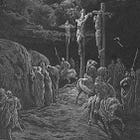
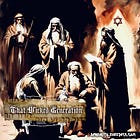


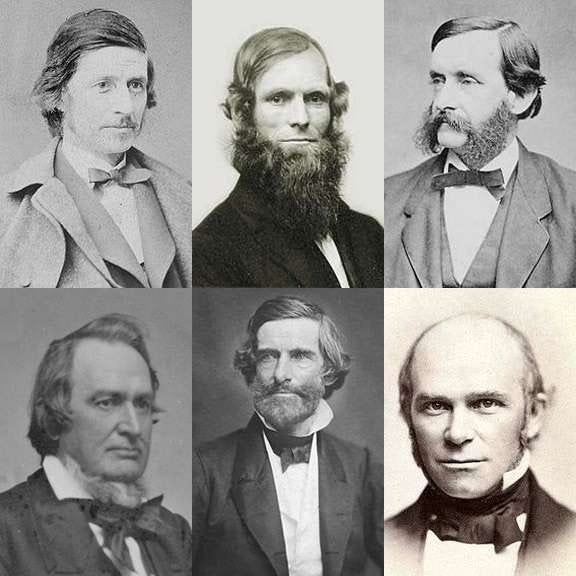
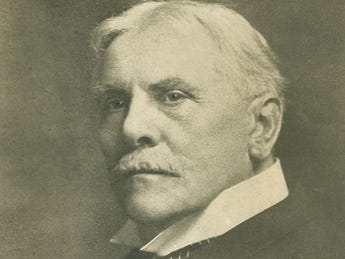


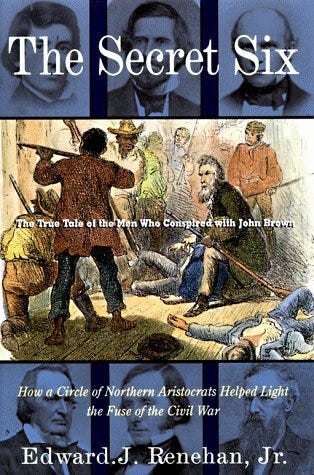
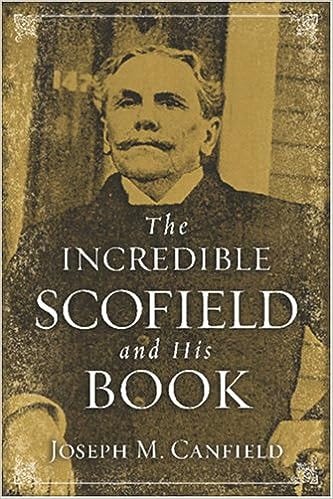
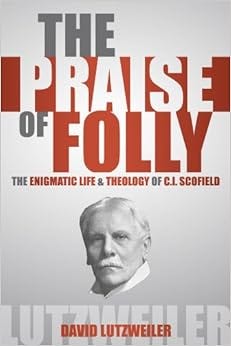
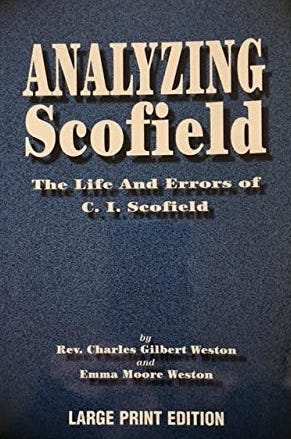
Who are the servants of Satan.....and does it matter whether we do it knowingly or unknowingly? - https://crushlimbraw.blogspot.com/2023/05/who-are-daservants-of-satan-does-it.html?m=0
My mother's KJV was a Scofield Reference Bible. I wonder now who might it have been that recommended it to her. Was it family? I don't recall, however, us ever making significant use of the marginal notes. She also had an RSV, which we used to help make sense of the KJV. I had my own KJV from 3rd grade Sunday school, that was awarded for scripture and catechism memorization.
I am rather surprised now to be reading these things about Scofield, here and elsewhere. I don't believe that he had significant influence in our lives. We were ensnared instead by another, later "wolf" promoting a different twisted soteriology and eschatology.